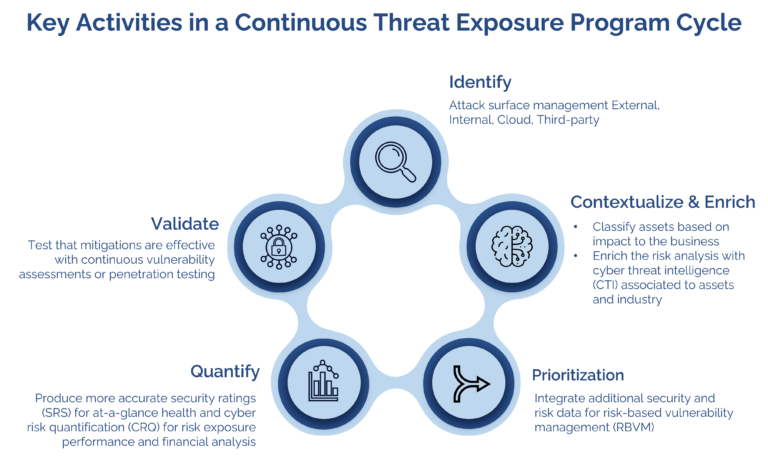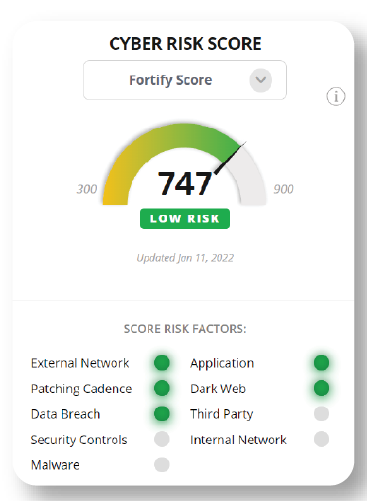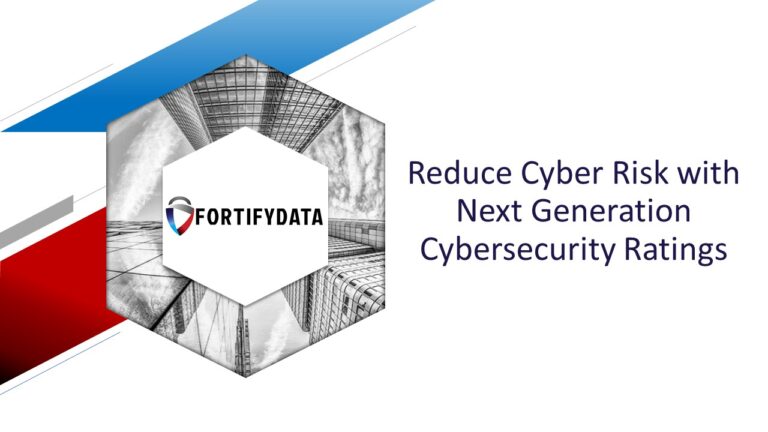
Continuous Threat Exposure Management – The 6 Aspects You’ll Need to Address Continuous Threat Exposure Management (CTEM) is an…
"This is an excellent starting point for any organization that wants to get serious about their cyber risk management. The system has the capability to grow as you become more sophisticated in your use"
IT Director
Services Industry
Understanding and managing cybersecurity risks is paramount and security ratings have emerged as a pivotal tool in this endeavor, offering insights into an organization’s cybersecurity posture and that of their third-party associates. There are multiple cybersecurity ratings companies, including FortifyData, BitSight and SecurityScorecard. This blog delves deeper into the multifaceted role of security ratings, emphasizing the importance of monitoring both internal and external cyber risks, as well as their other use cases.
Security ratings are essentially a measure of an organization’s cybersecurity health. They are derived from a variety of data points, including known vulnerabilities, historical cyber incidents, and other relevant factors. These ratings are often compared to credit scores, but instead of assessing financial risk, they evaluate cyber risk.

Security ratings play a critical role by providing:
Additional Resources
Context based security ratings
Cybersecurity rating scale explained
How are security ratings created?
What is a good cybersecurity rating?
How do you improve your security rating?
Is it easy to switch security ratings providers?
Why is my security rating wrong?
What Kind of Company is BitSight?
Select What are the 5 C’s of Cybersecurity?
What is the Highest Security Rating?
What is the difference between SecurityScorecard and BitSight?
The Evolution of Cybersecurity Ratings and How They Can Boost Risk Visibility

FortifyData is at the forefront of cyber risk management. Our comprehensive platform performs automated risk assessments, both internal and external, as well as for cloud environments and third-party entities. By continuously analyzing cyber threat intelligence, likelihood, and business impact, FortifyData provides a prioritized view of cyber risks. This not only aids organizations in understanding their security posture but also in managing risks within specific business units.
Furthermore, FortifyData emphasizes the importance of continuous assessments, especially for critical vendors, highlighting the fact that a vendor’s exposures can directly impact the organization. In essence, the FortifyData platform offers businesses a holistic view of their cyber risk landscape.

In summation, security ratings are not just a metric; they are a compass, guiding organizations through the intricate maze of cybersecurity. By understanding and monitoring both internal and third-party risks, businesses can fortify their digital frontiers, ensuring resilience and continuity in an ever-evolving cyber landscape. With platforms like FortifyData, organizations can further enhance their understanding and management of cyber risks, ensuring a safer digital future.



| Cookie | Duration | Description |
|---|---|---|
| cookielawinfo-checkbox-analytics | 11 months | This cookie is set by GDPR Cookie Consent plugin. The cookie is used to store the user consent for the cookies in the category "Analytics". |
| cookielawinfo-checkbox-functional | 11 months | The cookie is set by GDPR cookie consent to record the user consent for the cookies in the category "Functional". |
| cookielawinfo-checkbox-necessary | 11 months | This cookie is set by GDPR Cookie Consent plugin. The cookies is used to store the user consent for the cookies in the category "Necessary". |
| cookielawinfo-checkbox-others | 11 months | This cookie is set by GDPR Cookie Consent plugin. The cookie is used to store the user consent for the cookies in the category "Other. |
| cookielawinfo-checkbox-performance | 11 months | This cookie is set by GDPR Cookie Consent plugin. The cookie is used to store the user consent for the cookies in the category "Performance". |
| viewed_cookie_policy | 11 months | The cookie is set by the GDPR Cookie Consent plugin and is used to store whether or not user has consented to the use of cookies. It does not store any personal data. |